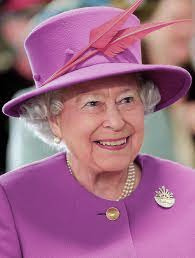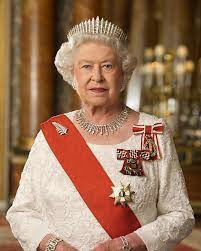Introduction
Queen Elizabeth II, the iconic monarch of the United Kingdom, has etched her name in the annals of history as one of the most enduring figures of our time. Born on April 21, 1926, Elizabeth Alexandra Mary Windsor was thrust into the world of royalty with a destiny that would see her become the longest-reigning monarch in British history. As we delve into the intricacies of her life, reign, and impact, we unravel the tapestry of Queen Elizabeth II’s extraordinary journey.
Early Life Queen Elizabeth II and Education
The story of Queen Elizabeth II begins in the quiet corridors of 17 Bruton Street, Mayfair, London, where she was born to the Duke and Duchess of York, who would later ascend the throne as King George VI and Queen Elizabeth (the Queen Mother). As the first child of the royal couple, Elizabeth’s upbringing was marked by the privileges and responsibilities befitting her royal lineage.
Her early years were overshadowed by the looming specter of World War II, which thrust the young princess into the harsh realities of conflict. Alongside her younger sister, Princess Margaret, Elizabeth was evacuated to Windsor Castle for safety during the Blitz, an experience that would shape her understanding of duty and resilience.
Despite the tumultuous backdrop of war, Elizabeth’s education remained a priority. Under the guidance of private tutors, she pursued a rigorous curriculum encompassing a broad spectrum of subjects, from history and literature to languages and the arts. Her education laid the foundation for her future role as a monarch, instilling in her a deep sense of duty and intellectual curiosity.
Ascension to the Throne:
The sudden death of her father, King George VI, on February 6, 1952, thrust Elizabeth into the spotlight as the presumptive heir to the throne. At the tender age of 25, she ascended to the throne, becoming Queen Elizabeth II, the sovereign ruler of the United Kingdom and the Commonwealth realms.
Her coronation, held on June 2, 1953, was a dazzling spectacle that captured the imagination of millions around the world. Against the backdrop of post-war recovery and burgeoning social change, Queen Elizabeth II’s accession symbolized continuity and stability, ushering in a new era for the monarchy and the nation.
A Symbol of Continuity and Stability
Throughout her reign, Queen Elizabeth II has remained a steadfast symbol of continuity and stability in an ever-changing world. In an era marked by rapid technological advancement, social upheaval, and geopolitical turmoil, her unwavering commitment to duty and service has provided a beacon of hope and reassurance for her subjects.
Whether presiding over state ceremonies, representing the Crown on official visits abroad, or engaging with her subjects at home, Queen Elizabeth II has epitomized the values of grace, dignity, and resilience. Despite the pressures of public life and the demands of her role, she has remained resolute in her dedication to serving the nation and the Commonwealth.
Modernization and Adaptation
Throughout her reign, Queen Elizabeth II has embraced the winds of change, steering the monarchy towards modernization and adaptation while preserving its timeless traditions and values. From her early adoption of television broadcasts to her embrace of digital communication platforms, she has leveraged technology to engage with her subjects and enhance the transparency of the monarchy.
Moreover, Queen Elizabeth II has played a pivotal role in shaping the evolution of the monarchy itself, fostering greater inclusivity, diversity, and accessibility within the royal family. Her support for charitable causes, environmental conservation efforts, and initiatives promoting social justice has endeared her to people of all backgrounds and generations.

Legacy and Impact
As Queen Elizabeth II approaches the twilight of her reign, her legacy looms large, spanning seven decades of unwavering service and dedication to her people. From her coronation in 1953 to the present day, she has navigated the complexities of monarchy with grace, dignity, and unwavering resolve.
Her reign has witnessed historic milestones, including the expansion of the Commonwealth, the devolution of powers within the United Kingdom, and the celebration of numerous jubilees and anniversaries. Beyond the pomp and pageantry of ceremonial duties, Queen Elizabeth II has touched the lives of millions through her acts of kindness, compassion, and leadership.
Conclusion
Queen Elizabeth II’s reign stands as a testament to the enduring power of duty, service, and grace in an ever-changing world. From her humble beginnings as a young princess to her role as the world’s longest-reigning monarch, she has embodied the highest ideals of leadership and public service.
As she prepares to pass the torch to the next generation, Queen Elizabeth II leaves behind a legacy that will endure for generations to come. Her unwavering commitment to her people, her dedication to duty, and her enduring grace serve as an inspiration to us all, reminding us of the transformative impact that one individual can have on the world stage. Long live the Queen Elizabeth II.





